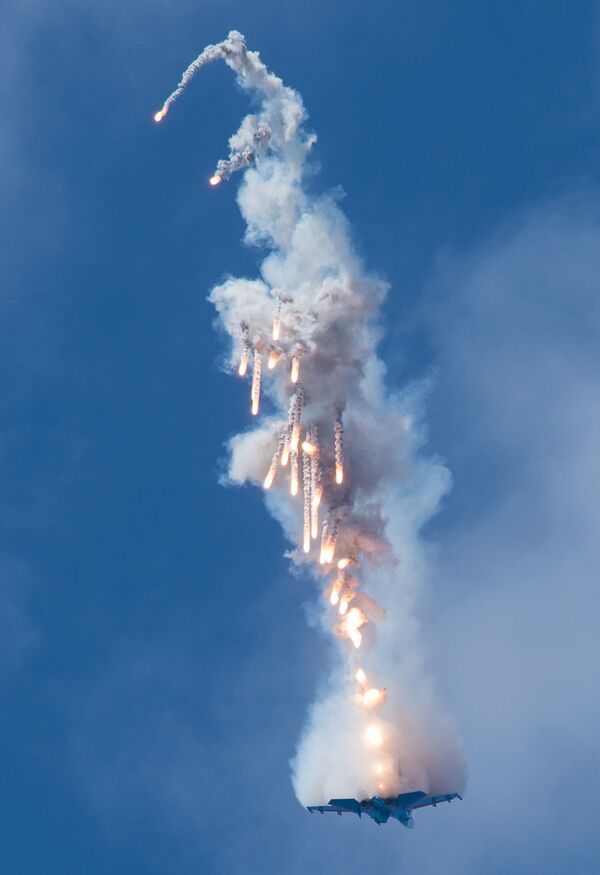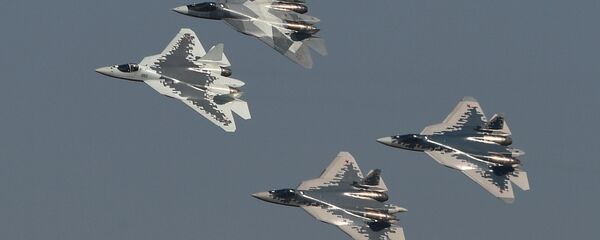The fighter jet manoeuvres usually seen at air shows, while appearing genuinely astonishing and jaw-dropping, actually serve practical purposes – to outperform an opponent, gain an upper hand, and ultimately win a dogfight.

For example, the famous "Pugachev's Cobra" manoeuvre, named after a Soviet test pilot, allowed Su-27 fighter crews to trick an opponent tailing them and to switch roles. Another manoeuvre, called "Kvochur's Bell", is used by pilots to fool enemy radars and guided air-to-air missiles, as well as to rapidly reduce speed before engaging ground targets. These manoeuvres are often performed on the verge of the aircraft stalling mid-air and only several models, such as Russia's Su-27 or fifth-generation Su-57, are capable of performing them without running the grave risk of crashing.
Only for the Best Pilots
But these manoeuvres come at a price – the pilots performing them experience abnormally high levels of G-stress, sometimes approaching the usually allowed maximum limit of 9G, Russian test pilot and first performer of the "Bell" Anatoly Kvochur explains. He describes the stress of 9G as a person essentially weighting nine times more than they actually do.

With such pressure also comes a plethora of other symptoms of high-G stress and the heavier it is, the more these cripple a pilot's ability to control an aircraft.
"At first, arms and legs get heavier, it gets more difficult to control the plane. Then one’s head starts tilting down. At 6G, a veil appears before one’s eyes. Under the influence of gravity, the blood along the spinal column goes down to the legs, leaving the brain devoid of oxygen and forcing it to shut down. You can't see clearly anymore and you lose the ability to properly perceive the current situation", Kvochur described.
Only a handful of pilots can withstand such stress and remain in control of their jets during a dogfight. These pilots first experience this stress in controllable situations in simulators that train their G-tolerance, making them less susceptible to such stress. Experienced pilots can even instinctively feel when they need to reduce the angle of attack during a manoeuvre in order to avoid so-called G-LOC – gravitation-induced loss of consciousness.
Technical Little Helpers
But pilots don't fight G-stress during dogfight manoeuvres "alone" – special aviation suits have been in development since the 1950s and have only been improving since.
These suits cover the pilot's entire body and automatically start to apply pressure on the lower parts when the jet begins to manoeuvre. By pressuring the pilot's legs and the rest of the lower body, the suit pushes the blood back up to the brain, giving it enough oxygen to function through to the end of the aerobatics.
Kvochur was able to try out one of the latest Russian pilot suits and shared that it "really helped" when he reached an 11.5G stress level, which is normally forbidden for pilots, as prolonged exposure can lead to trauma or even death.





